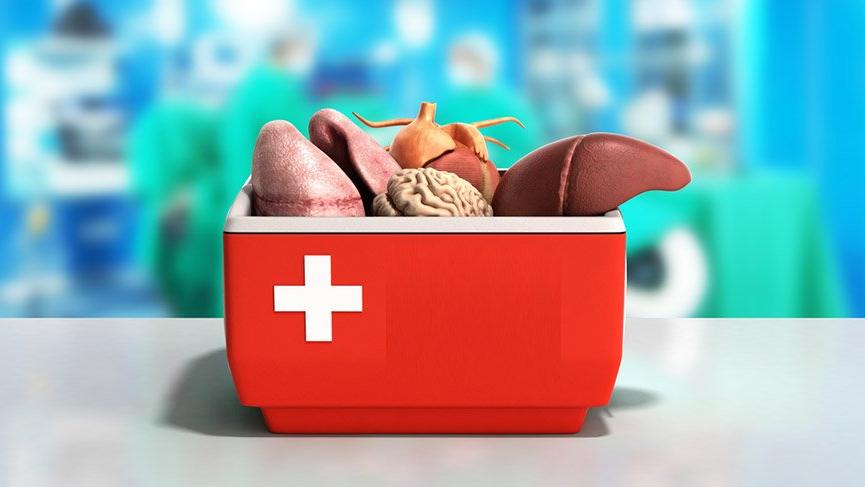TRANSPLANTATİON
Organ transplants are an effective treatment option for organ failures. The most important factor limiting this widely used practice today is the insufficient level of organ donations. Patients see travel to another country and commercial transplantation as a solution in the face of organ donation shortage and long waiting lists, and this situation has revealed the concept of transplant tourism.
Transplantation
Kidney
Liver
Heart
Pancreas
Bone marrow
Cornea
Bone
Small Intestine etc.
What is Organ Transplantation?
Organ transplantation is an operation in which an organ is removed from the donor body and then placed in a recipient body to replace a damaged or missing organ. The donor and recipient can be in the same location, or organs from a donor located in a separate region can be transplanted to a recipient located elsewhere.
Organs or tissues to be transplanted can be taken from living bodies or cadavers. Transplantation medicine is one of the most challenging and complex areas of modern medicine. Organs that can be successfully transplanted today include the heart, kidneys, liver, lungs, pancreas, intestine, thymus, and uterus. When medical data are examined globally, it is seen that the most commonly transplanted organs are the kidneys, followed by the liver and heart.
A key issue for organ transplantation is transplant rejection problems, such as the body showing an immune response to the transplanted organ, based on this possible transplant failure, and the need for immediate removal of the organ from the recipient.
Where appropriate, serotyping should be performed to determine the most appropriate donor-recipient match to minimize the possibility of transplant rejection. In addition, the use of immunosuppressant drugs can reduce the possibility of transplant rejection.
Tissues that can be transplanted include bones, tendons, cornea, skin, heart valves, nerves, and vessels. Bone and tendon transplants are called musculoskeletal grafts. Cornea and musculoskeletal grafts are the most frequently transplanted tissues, and such transplants are much more common than organ transplants.
Organ donors can be individuals who are alive, dead or brain dead, and whose lives are maintained by machines. It is possible to use organs removed from the body for transplantation within 24 hours after heartbeat stops or brain death occurs. Most types of tissue, with the exception of corneas, can be preserved and stored in special tissue “banks” for up to five years, unlike organs.
Organ transplantation raises a number of ethical issues, including the medical definition of death, when and how consent must be given for an organ to be transplanted, the donor’s consent, and whether there is a monetary compensation for organs taken for transplantation.
Other ethical issues related to this situation include transplant tourism and, more broadly, the socio-economic conditions that organ harvesting or transplantation may pose or be seen as a solution.
What are the Types of Organ Transplantation?
Organ and tissue transplants can take place in several ways, depending on who the recipient is. If the same person is both a recipient and a donor, that is, organ or tissue transplantation within the same body is called autograft. Transplants between two individuals of the same species are called allografts. Allografts can be of living body or cadaver origin.
autograft
Autograft is a tissue transplant to the same person. In some cases, this procedure is done with tissue that is surplus, regenerable, or that is more desperately needed elsewhere for survival.
Examples of this are skin grafts, or vessel extraction for coronary bypass treatment. In some cases, tissue removal is performed to treat the tissue separately or to treat the individual without that tissue, and then the tissue is added back to the individual.
Examples of this are stem cell autograft and blood storage before surgery. As another example, during rotationplasty, a distal, i.e. distant joint is used instead of the more proximal, that is, the closer one. Typically, a foot or ankle joint is used to replace the knee joint. The person’s foot is amputated and turned over, the knee is removed, and the tibia is joined to the femur.
Allograft and allotransplantation
Allograft is the name given to the procedure of transplanting an organ or tissue between two genetically non-identical members of the same species. Tissue and organ transplants performed in humans are usually allografts.
However, due to genetic differences between the organ and the recipient, the recipient’s immune system may recognize the organ as a foreign body in the body and attempt to destroy it, causing transplant rejection. The risk of transplant rejection can be estimated by measuring the panel reactive antibody level.
isograft
An isograft is a subset of allografts in which organs or tissues are transplanted between a genetically identical donor and recipient, such as an identical twin.
Although isografts are the same as allografts in terms of anatomical procedures, they generally do not trigger an immune response, unlike other types of transplantation.
Xenograft and Xenotransplantation
Xenograft and xenotransplantation It is the name given to tissue and organ transplants between two different species of organisms. An example of this is the very common and successful porcine heart valve transplant. However, xenotransplantation is often an extremely dangerous type of transplant due to the increased risk of compatibility, rejection, and disease due to interspecies transmission.
In order to minimize these risks and to eliminate the problem of the scarcity of organs to be transplanted, studies are continuing on the transplantation of human body organs to humans after they are grown on various animal subjects.
Domino Transplants
Domino transplants are multiple transplants performed in a chain for various reasons. For example, a liver that secretes a protein that causes long-term damage to the body can be transplanted from a younger individual to an older person whose diseased liver will not have much effect on life expectancy due to the slow progression of the diseased liver, and a healthy liver taken from an old individual can be given to a young person.
As another example, in cases where two lungs need to be replaced, it is technically easier to remove the heart along with the lungs and insert a whole new lung/heart system. However, since the removed heart will still be healthy in such cases, the originally removed heart can be implanted in another patient who needs a heart transplant.
ABO Incompatible Transplants
It is possible for very young children, usually under 12 months, to receive organs from donors with whom they would normally be incompatible, since their immune system is not yet well developed. This condition is known as ABO incompatible transport, or ABOi for short.
There has also been limited success in ABO-incompatible heart transplants in adults. In these cases, it appeared necessary for adult recipients to have low levels of anti-A or anti-B antibodies. In these cases, kidney transplantation is more successful and long-term survival rates appear to be similar to ABOc transplantations.
Transplantable Organs and Tissues
The types of donors that successfully transplanted tissues and organs under normal conditions are as follows.
Chest:
Heart (cadaver donor only)
Lung (cadaver and living donor)
Abdominal cavity:
Kidney (cadaver and living donor)
Liver (either cadaveric donor or multiple living donors if a whole liver is required, cadaver and living donor if partial liver transplant is sufficient)
Pancreas (cadaver donor only; a very severe form of diabetes occurs if the pancreas of a living person is removed)
Intestine (cadaveric and living donor; normally takes place in the small intestine)
Stomach (cadaver donor only)
Testis (cadaver and living donor)
Penis (cadaver donor)
Tissues, cells and body fluids.
Hand (cadaver donor only)
Cornea (cadaver donor only)
Including skin transplant, autograft facial graft and very rarely face transplant
Islets of Langerhans, ie pancreatic islet cells (cadaver and living donor)
Bone marrow / Adult stem cells (living donor and autograft)
Blood transfusion / Blood Products Transfusion (Living donor and autograft)
Blood Vessels (Cadaver donor and autograft)
Heart Valve (Living donor and xenograft [pig / bovine])
Bone (cadaver and living donor).
Who Can Be a Tissue or Organ Donor?
Almost anyone can donate tissue or organs, thus saving one or more lives. Organ donors can be individuals who are still alive or individuals who have been brain dead.
Brain death refers to the cessation of brain function, typically due to an injury to the brain due to traumatic or pathological causes, or the interruption of blood supply to the brain due to reasons such as suffocation.
In such cases, breathing or pulse can be maintained artificially by means. Brain death criteria vary from country to country. But overall, brain deaths represent a very low proportion of normal deaths, meaning that the overwhelming majority of deaths are ineligible for organ donation.
If an individual whose brain death is expected or has occurred has previously donated organs, he or she may be kept in a suitable operating room for the transplantation of organs to give life to others.
Tissues can also be transplanted from individuals who have died from brain or circulatory death. It is generally possible to recover tissues within 24 hours of cessation of heartbeat.
Unlike organs, most tissues, with the exception of the corneas, can be preserved and stored for up to five years. However, a single tissue donor can donate enough grafts to give life to more than 60 recipients. Because of these factors, tissue transplants are much more common than organ transplants.
Living donor
Living donors can donate organs if they will survive after the organ has been partially or completely removed and the body can continue other functions in a healthy way. Examples of such organ donations are single kidney donation, partial liver donation, lung lobe donation and small intestine donation.
Deceased (Cadaver) Donor
Cadaver donors are people who are declared brain dead and whose bodies continue their organic activities by ventilators or other mechanical mechanisms until their organs are removed for transplantation.
Before the medical recognition of the concept of brain death in the 1980s, organ transplants were performed with organs taken from the bodies of donors whose circulatory system had completely stopped. Organs taken from donors whose circulatory system has completely stopped have less successful results than organs taken from a donor who has brain death but maintains body activities due to machines.




